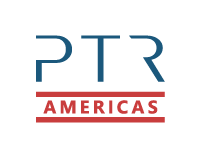- Understanding the roles and interactions of these key players is essential to comprehend the complexities and opportunities within the US electricity sector.
- FERC is an independent regulatory agency that regulates the interstate transmission of electricity within the US.
- The collaborative efforts of regulatory agencies, ISOs/RTOs, and utilities are indispensable to the vitality and sustainability of the US electricity sector
Key Players in the Electricity Sector
Regulatory Agencies
FERC
To maintain FERC’s regulatory independence, the president and Congress cannot review the agency’s decisions. However, the Federal Courts have the power to review FERC’s decisions. Furthermore, regulation of retail electricity sales, approval of construction of generation assets, regulation of nuclear power plants, and reliability assessment of distribution networks do not fall under the ambit of FERC.
NERC
State Regulatory Agencies
Within their jurisdiction, State commissions decide on fair and reasonable rates for electric service. These commissions adopt and enforce regulations that ensure the safety and interest of consumers, evaluate the economic and environmental impact of utility operations, and mediate disputes between the utility and consumers.
The State Department of Environmental Protection regulates the State’s air, land, and water resources. It issues permits for the construction of pollutant-emitting assets, ensures public safety by cleaning contaminated sites, and monitors companies’ emissions.

Figure 1: Regulatory agencies in the US.
Source: PTR Inc.
Independent System Operators/Regional Transmission Organizations
On the other hand, RTO performs functions similar to an ISO, but the extent of responsibility for the transmission network, as decided by the FERC, is on the higher side. RTOs are responsible for the coordination, control, and monitoring of the power system within their territory. ISOs/RTOs are also involved in regional planning to make sure that the requirements of the system in terms of infrastructure are adequately met.
Earlier, when there weren’t any ISOs/RTOs, utilities were responsible for transmission planning. In areas that do not fall under the ambit of ISOs/RTOs, utilities are still carrying out transmission planning themselves.
In North America, there are seven ISOs and four RTOs. Seven ISOs include California ISO, New York ISO, Electric Reliability Council of Texas, Midcontinent Independent System Operator, ISO New England, Alberta Electric System Operator, Independent Electricity System Operator. Four RTOs include PJM Interconnection, Midcontinent Independent System Operator, Southwest Power Pool, and ISO New England.

Figure 2: ISOs and RTOs in the US.
Source: PTR Inc.
Utilities
Investor-Owned Utilities
Public Power Utilities
Cooperatives
Federal Power Programs
Independent Power Producers

Figure 3: Types of utilities in the US.
Source: PTR Inc.
Looking Ahead
ISOs/RTOs facilitate the seamless transmission of electricity across diverse geographic regions, enhancing grid reliability and resilience against disruptions. Utilities, operating at the forefront of energy delivery, continue to diversify their portfolios with cleaner, renewable energy sources while maintaining the stability of existing infrastructure.
As these key players adapt to emerging challenges such as climate change and technological innovation, their collective efforts will shape a resilient electricity sector capable of meeting the needs of future generations.
Europe: +49-89-12250950
Americas: +1 408-604-0522
Japan: +81-80-7808-1378
GCC/Rest of APAC: +971-58-1602441
More About our: Electrical Infrastructure Market Intelligence
Recent Insights
COP28: Balancing Hope and Skepticism in Climate Talks
The Conference of the Parties (COP) is the primary decision-making body of the United Nations Framework Convention on Climate Change (UNFCCC). This annual gathering of member states focuses on addressing global climate change. In the lead up to COP28, amid the rising...
Adoption of Asset Health Monitoring Solutions for Power Grid Equipment
• Power transformers and HV switchgear are usually the most valuable assets in a substation, requiring proper monitoring and maintenance. • Cost-benefit analysis is a vital tool that helps electric utility companies, regulators, and grid operators in making...
Carbon Capture, Storage and Utilization: Transforming Emissions into Solutions
• CCUS technologies involve capturing CO2 emissions from industrial processes, utilizing it in various ways, and storing it permanently underground.• CCUS provides a cost-effective way to reduce GHG emissions from industrial processes, thereby contributing to the...
Adoption of Asset Health Monitoring Solutions for Power Grid Equipment
• Power transformers and HV switchgear are usually the most valuable assets in a substation, requiring proper monitoring and maintenance. • Cost-benefit analysis is a vital tool that helps electric utility companies, regulators, and grid operators in making...
Carbon Capture, Storage and Utilization: Transforming Emissions into Solutions
• CCUS technologies involve capturing CO2 emissions from industrial processes, utilizing it in various ways, and storing it permanently underground.• CCUS provides a cost-effective way to reduce GHG emissions from industrial processes, thereby contributing to the...
Middle East Energy (MEE) Conference Impressions 2023
The Middle East Energy (MEE) conference & trade fair in Dubai, which took place from 7th to 9th March, was a prime meeting place for professionals from all over the energy and power grid industry. The conference provided a platform for key equipment manufacturers...
The 2022 United Nations Climate Change Conference (COP27): Overview, Structure, and Achievements
The Sharm El-Sheikh Climate Change Conference is currently underway in Egypt, commencing on 6 November 2022 and ending on the 18th. The conference builds on pledges made in the COP26 at Glasgow last year and comprises of a series of events to build on future ambition....





